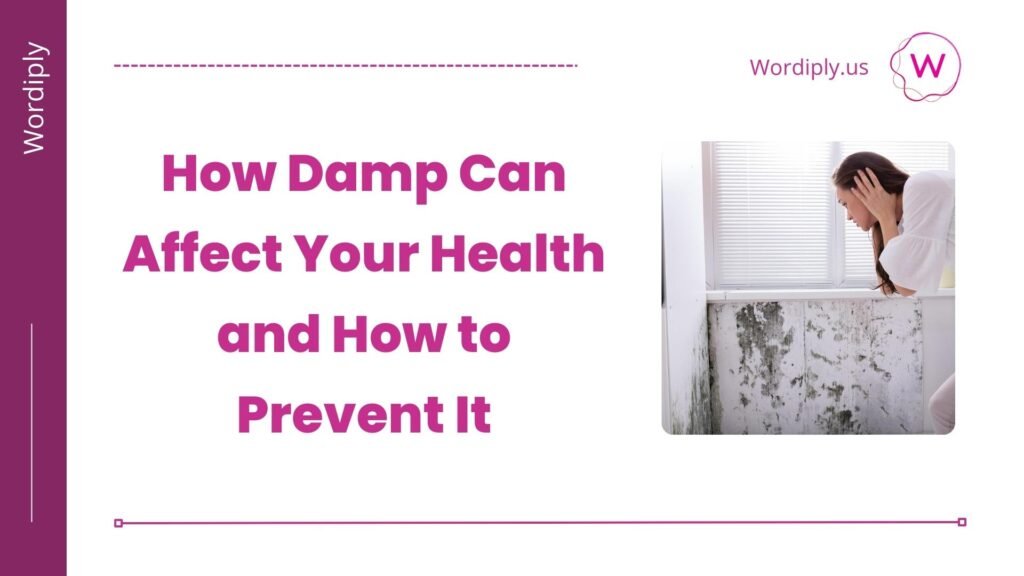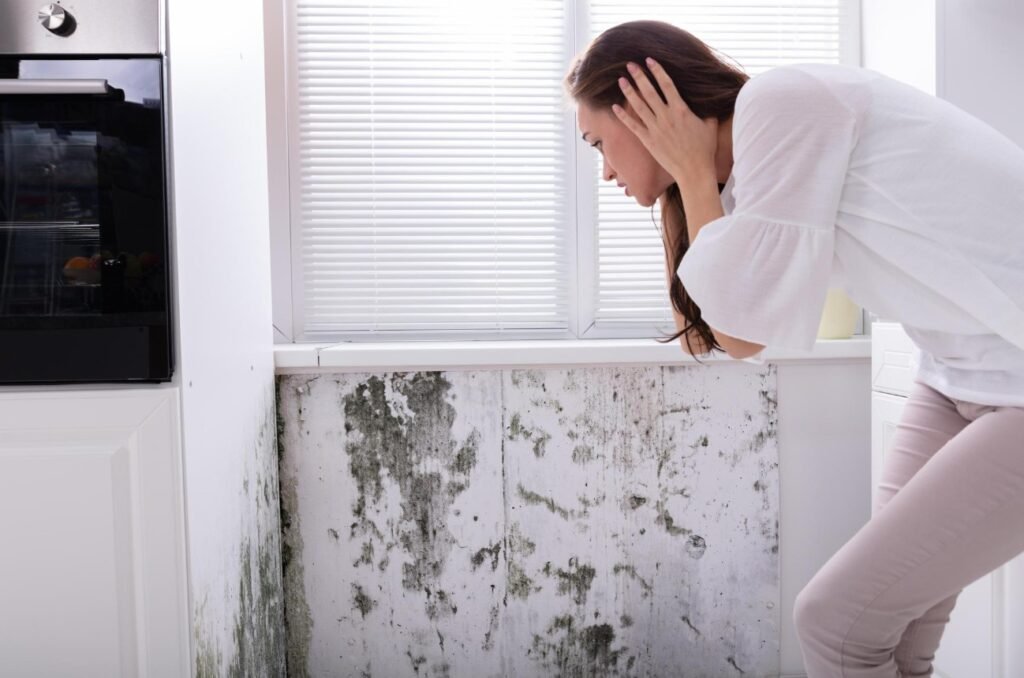
Damp issues are a common concern in many homes and buildings. While they may seem like a mere inconvenience, the impact of damp goes far beyond structural damage—it can have serious consequences for your health and well-being.

This blog explores how damp can affect your health and provides actionable tips for preventing it, with insights from the expertise of damp specialists London Damp Solutions and information.
The Health Risks Associated with Damp and Mould
1. Respiratory Issues
Damp conditions create the perfect environment for mould and mildew to thrive. These fungi release spores into the air, which, when inhaled, can irritate the respiratory system. Common symptoms include:
- Coughing.
- Wheezing.
- Shortness of breath.
For individuals with pre-existing respiratory conditions such as asthma or chronic obstructive pulmonary disease (COPD), exposure to mould spores can trigger severe flare-ups or long-term complications. Recent COPD statistics highlight how widespread this chronic respiratory disease is, underscoring why damp-induced mould exposure can be especially harmful.
2. Allergic Reactions
Mould exposure can cause allergic reactions in sensitive individuals, even if they are otherwise healthy. Symptoms may include:
- Sneezing.
- Runny nose.
- Itchy eyes, skin, or throat.
Over time, repeated exposure to mould can increase sensitivity, making the reactions more severe and frequent.
3. Skin Irritations
Prolonged exposure to damp environments can lead to skin problems such as eczema or rashes. The high humidity levels associated with damp conditions can also prevent sweat from evaporating, exacerbating skin issues.
4. Mental Health Impacts
Living in a damp environment isn’t just a physical health issue—it can take a toll on mental well-being. Constant exposure to dampness, unpleasant smells, and visible mould growth can lead to:
- Stress and anxiety.
- Poor sleep quality due to discomfort.
- A feeling of helplessness or frustration over persistent home issues.
5. Risks to Vulnerable Groups
Certain groups are more susceptible to the effects of damp, including:
- Children: Their developing immune systems make them particularly vulnerable to respiratory and allergic conditions.
- Elderly individuals: Chronic exposure can exacerbate existing health conditions, such as arthritis or respiratory problems.
- Pregnant women: Damp and mould exposure may increase the risk of complications.
How Damp Enters Homes
To effectively prevent damp, it’s important to understand its sources. Common causes include:
1. Penetrating Damp
Water ingress through external walls, roofs, or windows due to damaged structures or poor sealing.
2. Rising Damp
Moisture travelling upwards from the ground due to the lack or failure of a damp-proof course (DPC).
3. Condensation
Excess humidity in the home that condenses on cold surfaces, such as walls, windows, and ceilings. This often results from poor ventilation.
4. Plumbing Issues
Leaky pipes or blocked drains can introduce dampness into walls and floors, encouraging mould growth.
Preventing Damp and Protecting Your Health
1. Maintain Proper Ventilation
Good airflow is essential for reducing humidity and preventing condensation:
- Open windows regularly, especially in bathrooms and kitchens.
- Use extractor fans in areas with high moisture levels.
- Invest in a dehumidifier to maintain optimal indoor humidity levels.
2. Fix Structural Issues Promptly
Timely maintenance of your property is crucial in preventing penetrating and rising damp:
- Repair damaged roofing, cracked walls, or faulty windows.
- Ensure gutters and drains are clear and functioning properly.
- Install or repair a damp-proof course to stop moisture from rising through walls.
3. Manage Indoor Humidity
Excessive humidity can be controlled by:
- Drying clothes outdoors whenever possible.
- Using tumble dryers with proper venting systems.
- Avoid overwatering indoor plants.
4. Insulate Your Home
Proper insulation helps maintain stable indoor temperatures, reducing the likelihood of condensation:
- Double-glazed windows.
- Wall and loft insulation.
- Insulated pipes to prevent leaks during colder months.
5. Professional Damp-Proofing
Sometimes, damp issues require the expertise of professionals. Companies like London Damp Solutions offer comprehensive assessments and treatments to protect your property. Services include:
- Damp-proof course installations.
- Basement waterproofing.
- Condensation control systems.
The Role of Regular Inspections
Conducting regular property inspections can help you identify and address damp issues early. Look out for:
- Discoloured or peeling wallpaper and paint.
- Musty odours.
- Visible mould or mildew patches.
- Water stains on ceilings or walls.
By catching these signs early, you can prevent minor issues from escalating into costly and harmful problems.
Why Prevention is Better Than Cure
The financial and health costs of addressing severe damp issues far outweigh the effort and investment required for prevention. Implementing preventative measures ensures:
- A healthier living environment for you and your family.
- Extended lifespan of your property’s structural elements.
- Savings on expensive repairs and health treatments.
The Benefits of Professional Damp Solutions
When DIY measures fall short, consulting experts is the best course of action. Professional damp-proofing companies can:
- Diagnose the specific source and type of damp.
- Tailor treatments to suit your property’s unique needs.
- Offer long-term guarantees for peace of mind.
London Damp Solutions specialises in identifying and resolving all types of damp issues, ensuring your home remains safe, dry, and comfortable.
Conclusion
Damp is more than an annoyance—it’s a serious health hazard that requires prompt attention. From respiratory issues to mental health effects, living in a damp environment can significantly impact your quality of life. However, with proper prevention strategies and professional damp-proofing services, you can maintain a safe and healthy home.
Taking proactive steps like ensuring proper ventilation, fixing structural issues, and managing humidity levels can protect both your property and your family’s health. For comprehensive damp assessments and tailored solutions, reach out to London Damp Solutions. By addressing damp effectively, you’re not just preserving your home—you’re investing in your well-being.
